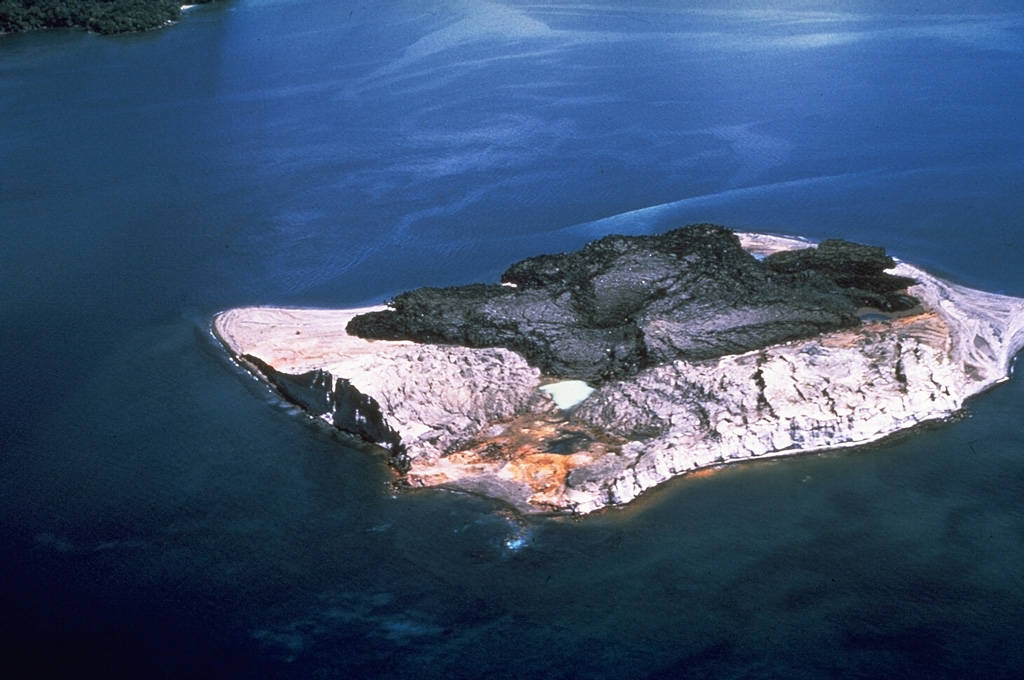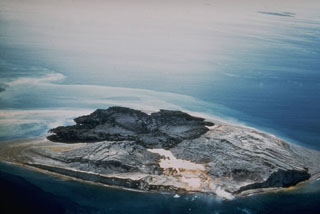

The Global Volcanism Program has no activity reports available for St. Andrew Strait.
The Global Volcanism Program has no Weekly Reports available for St. Andrew Strait.
The Global Volcanism Program has no Bulletin Reports available for St. Andrew Strait.
|
|
||||||||||||||||||||||||||
There is data available for 4 confirmed eruptive periods.
1953 Jun 27 - 1957 Jan 28 Confirmed Eruption (Submarine) VEI: 2
| Episode 1 | Eruption (Submarine) | Tuluman | |||||||||||||||||||||||||||||||||||||||||||||||||||||||||||||||||||||||||||||||||||||||||||||||||||||||||||||||||
|---|---|---|---|---|---|---|---|---|---|---|---|---|---|---|---|---|---|---|---|---|---|---|---|---|---|---|---|---|---|---|---|---|---|---|---|---|---|---|---|---|---|---|---|---|---|---|---|---|---|---|---|---|---|---|---|---|---|---|---|---|---|---|---|---|---|---|---|---|---|---|---|---|---|---|---|---|---|---|---|---|---|---|---|---|---|---|---|---|---|---|---|---|---|---|---|---|---|---|---|---|---|---|---|---|---|---|---|---|---|---|---|---|---|---|
| 1953 Jun 27 - 1957 Jan 28 | Evidence from Observations: Reported | |||||||||||||||||||||||||||||||||||||||||||||||||||||||||||||||||||||||||||||||||||||||||||||||||||||||||||||||||
| Intermittent rhyolitic explosive and effusive eruptions from June 1953 to January 1957 from multiple submarine vents formed new islands that coalesced to form present-day Tuluman Island. Activity was most vigorous from Feburary to March 1955 and near the end of the eruption in January 1957, when subaerial effusive activity dominated. | ||||||||||||||||||||||||||||||||||||||||||||||||||||||||||||||||||||||||||||||||||||||||||||||||||||||||||||||||||
|
List of 21 Events for Episode 1 at Tuluman
|
||||||||||||||||||||||||||||||||||||||||||||||||||||||||||||||||||||||||||||||||||||||||||||||||||||||||||||||||||
[ 1931 ] Uncertain Eruption
| Episode 1 | Uncertain | Tuluman (?) | |||
|---|---|---|---|---|
| 1931 - Unknown | Evidence from Unknown | |||
| An unsubstantiated 1931 report published in the Pacific Islands Monthly noted a submarine disturbance accompanied by clouds of steam and the formation of a new 3-km-long reef at some unspecified location off Baluan Island. This event may have been from the future site of Tuluman Island (9 km NNE of Baluan), but other sites are possible. A report of a pre-1942 encounter of densely packed pumice and anomalously shallow sea floor somewhere near Manus Island could possibly be the same as the 1931 event, but both reports are considered uncertain (Johnson et al., 1981). | ||||
1883 Mar 28 Confirmed Eruption (Explosive / Effusive) VEI: 2
| Episode 1 | Eruption (Explosive / Effusive) | Tuluman | |||||||||||||||||||||||
|---|---|---|---|---|---|---|---|---|---|---|---|---|---|---|---|---|---|---|---|---|---|---|---|---|
| 1883 Mar 28 - Unknown | Evidence from Observations: Reported | |||||||||||||||||||||||
| CAVW lists an eruption in 1883, but Cooke et al. (1976) and Lowenstein (1982) list the eruption as uncertain. Reynolds et al. (1980) mention reports from Manus Island of detonations and incandescent eruption columns that may have been from site of Tuluman. | ||||||||||||||||||||||||
|
List of 3 Events for Episode 1 at Tuluman
|
||||||||||||||||||||||||
0350 (?) Confirmed Eruption (Explosive / Effusive)
| Episode 1 | Eruption (Explosive / Effusive) | Lou Island (Bedal volcano) | ||||||||||||||||||||||||||||||||||||||
|---|---|---|---|---|---|---|---|---|---|---|---|---|---|---|---|---|---|---|---|---|---|---|---|---|---|---|---|---|---|---|---|---|---|---|---|---|---|---|---|
| 0350 (?) - Unknown | Evidence from Isotopic: 14C (uncalibrated) | ||||||||||||||||||||||||||||||||||||||
| Eruption of the Rei tephra, tentatively dated at 1,600 BP from several 14C dates, must have completely devastated the island, killing all vegetation, as well as any people and animals (Pain, 1981). | |||||||||||||||||||||||||||||||||||||||
|
List of 6 Events for Episode 1 at Lou Island (Bedal volcano)
|
|||||||||||||||||||||||||||||||||||||||
0240 BCE ± 100 years Confirmed Eruption (Explosive / Effusive)
| Episode 1 | Eruption (Explosive / Effusive) | Lou Island (Bedal volcano) | ||||||||||||||||||
|---|---|---|---|---|---|---|---|---|---|---|---|---|---|---|---|---|---|---|---|
| 0240 BCE ± 100 years - Unknown | Evidence from Isotopic: 14C (uncalibrated) | ||||||||||||||||||
| A 14C date of 2,190 ± 100 BP was obtained from a pyroclastic-flow deposit near Bedul volcano that is younger than the Baun tephra (Pain, 1981). | |||||||||||||||||||
|
List of 2 Events for Episode 1 at Lou Island (Bedal volcano)
|
|||||||||||||||||||
This compilation of synonyms and subsidiary features may not be comprehensive. Features are organized into four major categories: Cones, Craters, Domes, and Thermal Features. Synonyms of features appear indented below the primary name. In some cases additional feature type, elevation, or location details are provided.
Synonyms |
||||
| Lou | Saint Andrew Strait | ||||
Cones |
||||
| Feature Name | Feature Type | Elevation | Latitude | Longitude |
| Bedul | Cone | 213 m | 2° 23' 0.00" S | 147° 23' 0.00" E |
| Bulumorsum | Cone | 270 m | 2° 24' 0.00" S | 147° 19' 0.00" E |
| Kombung | Cone | 186 m | 2° 23' 0.00" S | 147° 21' 0.00" E |
| Monkul | Cone | 221 m | 2° 25' 0.00" S | 147° 19' 0.00" E |
| Pam Lin | Cone | 81 m | 2° 30' 0.00" S | 147° 20' 0.00" E |
| Pam Mandian | Cone | 65 m | 2° 30' 0.00" S | 147° 20' 0.00" E |
| Tuluman
Tulaman |
Cone | 29 m | 2° 26' 49.00" S | 147° 19' 0.00" E |
 The St. Andrew Strait volcano is located in the Admiralty Islands north of Papua New Guinea. The volcanic complex consists of a series of overlapping Quaternary cones formed by rhyolitic lava flows and pyroclastic deposits on Lou and Tuluman Islands. Volcanism is aligned along a curved arc, extending through the 12-km-long Lou Island. Tuluman Island, seen here from the SW with Lou Island 1.5 km away at the upper left, was formed during a 1953-57 eruption.
The St. Andrew Strait volcano is located in the Admiralty Islands north of Papua New Guinea. The volcanic complex consists of a series of overlapping Quaternary cones formed by rhyolitic lava flows and pyroclastic deposits on Lou and Tuluman Islands. Volcanism is aligned along a curved arc, extending through the 12-km-long Lou Island. Tuluman Island, seen here from the SW with Lou Island 1.5 km away at the upper left, was formed during a 1953-57 eruption. Intermittent submarine explosive and effusive eruptions from multiple vents during June 1953 to January 1957 created new islands that coalesced to form Tuluman Island. Activity was most vigorous during February-March 1955, and near the end of the eruption in January 1957 when subaerial effusive activity dominated. This March 1960 view from the SW shows dark rhyolitic lava flows at the far end of the island and lighter deposits from eroded tuff cones.
Intermittent submarine explosive and effusive eruptions from multiple vents during June 1953 to January 1957 created new islands that coalesced to form Tuluman Island. Activity was most vigorous during February-March 1955, and near the end of the eruption in January 1957 when subaerial effusive activity dominated. This March 1960 view from the SW shows dark rhyolitic lava flows at the far end of the island and lighter deposits from eroded tuff cones.There are no samples for St. Andrew Strait in the Smithsonian's NMNH Department of Mineral Sciences Rock and Ore collection.
| Copernicus Browser | The Copernicus Browser replaced the Sentinel Hub Playground browser in 2023, to provide access to Earth observation archives from the Copernicus Data Space Ecosystem, the main distribution platform for data from the EU Copernicus missions. |
| MIROVA | Middle InfraRed Observation of Volcanic Activity (MIROVA) is a near real time volcanic hot-spot detection system based on the analysis of MODIS (Moderate Resolution Imaging Spectroradiometer) data. In particular, MIROVA uses the Middle InfraRed Radiation (MIR), measured over target volcanoes, in order to detect, locate and measure the heat radiation sourced from volcanic activity. |
| MODVOLC Thermal Alerts | Using infrared satellite Moderate Resolution Imaging Spectroradiometer (MODIS) data, scientists at the Hawai'i Institute of Geophysics and Planetology, University of Hawai'i, developed an automated system called MODVOLC to map thermal hot-spots in near real time. For each MODIS image, the algorithm automatically scans each 1 km pixel within it to check for high-temperature hot-spots. When one is found the date, time, location, and intensity are recorded. MODIS looks at every square km of the Earth every 48 hours, once during the day and once during the night, and the presence of two MODIS sensors in space allows at least four hot-spot observations every two days. Each day updated global maps are compiled to display the locations of all hot spots detected in the previous 24 hours. There is a drop-down list with volcano names which allow users to 'zoom-in' and examine the distribution of hot-spots at a variety of spatial scales. |
|
WOVOdat
Single Volcano View Temporal Evolution of Unrest Side by Side Volcanoes |
WOVOdat is a database of volcanic unrest; instrumentally and visually recorded changes in seismicity, ground deformation, gas emission, and other parameters from their normal baselines. It is sponsored by the World Organization of Volcano Observatories (WOVO) and presently hosted at the Earth Observatory of Singapore.
GVMID Data on Volcano Monitoring Infrastructure The Global Volcano Monitoring Infrastructure Database GVMID, is aimed at documenting and improving capabilities of volcano monitoring from the ground and space. GVMID should provide a snapshot and baseline view of the techniques and instrumentation that are in place at various volcanoes, which can be use by volcano observatories as reference to setup new monitoring system or improving networks at a specific volcano. These data will allow identification of what monitoring gaps exist, which can be then targeted by remote sensing infrastructure and future instrument deployments. |
| Volcanic Hazard Maps | The IAVCEI Commission on Volcanic Hazards and Risk has a Volcanic Hazard Maps database designed to serve as a resource for hazard mappers (or other interested parties) to explore how common issues in hazard map development have been addressed at different volcanoes, in different countries, for different hazards, and for different intended audiences. In addition to the comprehensive, searchable Volcanic Hazard Maps Database, this website contains information about diversity of volcanic hazard maps, illustrated using examples from the database. This site is for educational purposes related to volcanic hazard maps. Hazard maps found on this website should not be used for emergency purposes. For the most recent, official hazard map for a particular volcano, please seek out the proper institutional authorities on the matter. |
| IRIS seismic stations/networks | Incorporated Research Institutions for Seismology (IRIS) Data Services map showing the location of seismic stations from all available networks (permanent or temporary) within a radius of 0.18° (about 20 km at mid-latitudes) from the given location of St. Andrew Strait. Users can customize a variety of filters and options in the left panel. Note that if there are no stations are known the map will default to show the entire world with a "No data matched request" error notice. |
| UNAVCO GPS/GNSS stations | Geodetic Data Services map from UNAVCO showing the location of GPS/GNSS stations from all available networks (permanent or temporary) within a radius of 20 km from the given location of St. Andrew Strait. Users can customize the data search based on station or network names, location, and time window. Requires Adobe Flash Player. |
| DECADE Data | The DECADE portal, still in the developmental stage, serves as an example of the proposed interoperability between The Smithsonian Institution's Global Volcanism Program, the Mapping Gas Emissions (MaGa) Database, and the EarthChem Geochemical Portal. The Deep Earth Carbon Degassing (DECADE) initiative seeks to use new and established technologies to determine accurate global fluxes of volcanic CO2 to the atmosphere, but installing CO2 monitoring networks on 20 of the world's 150 most actively degassing volcanoes. The group uses related laboratory-based studies (direct gas sampling and analysis, melt inclusions) to provide new data for direct degassing of deep earth carbon to the atmosphere. |
| Large Eruptions of St. Andrew Strait | Information about large Quaternary eruptions (VEI >= 4) is cataloged in the Large Magnitude Explosive Volcanic Eruptions (LaMEVE) database of the Volcano Global Risk Identification and Analysis Project (VOGRIPA). |
| EarthChem | EarthChem develops and maintains databases, software, and services that support the preservation, discovery, access and analysis of geochemical data, and facilitate their integration with the broad array of other available earth science parameters. EarthChem is operated by a joint team of disciplinary scientists, data scientists, data managers and information technology developers who are part of the NSF-funded data facility Integrated Earth Data Applications (IEDA). IEDA is a collaborative effort of EarthChem and the Marine Geoscience Data System (MGDS). |